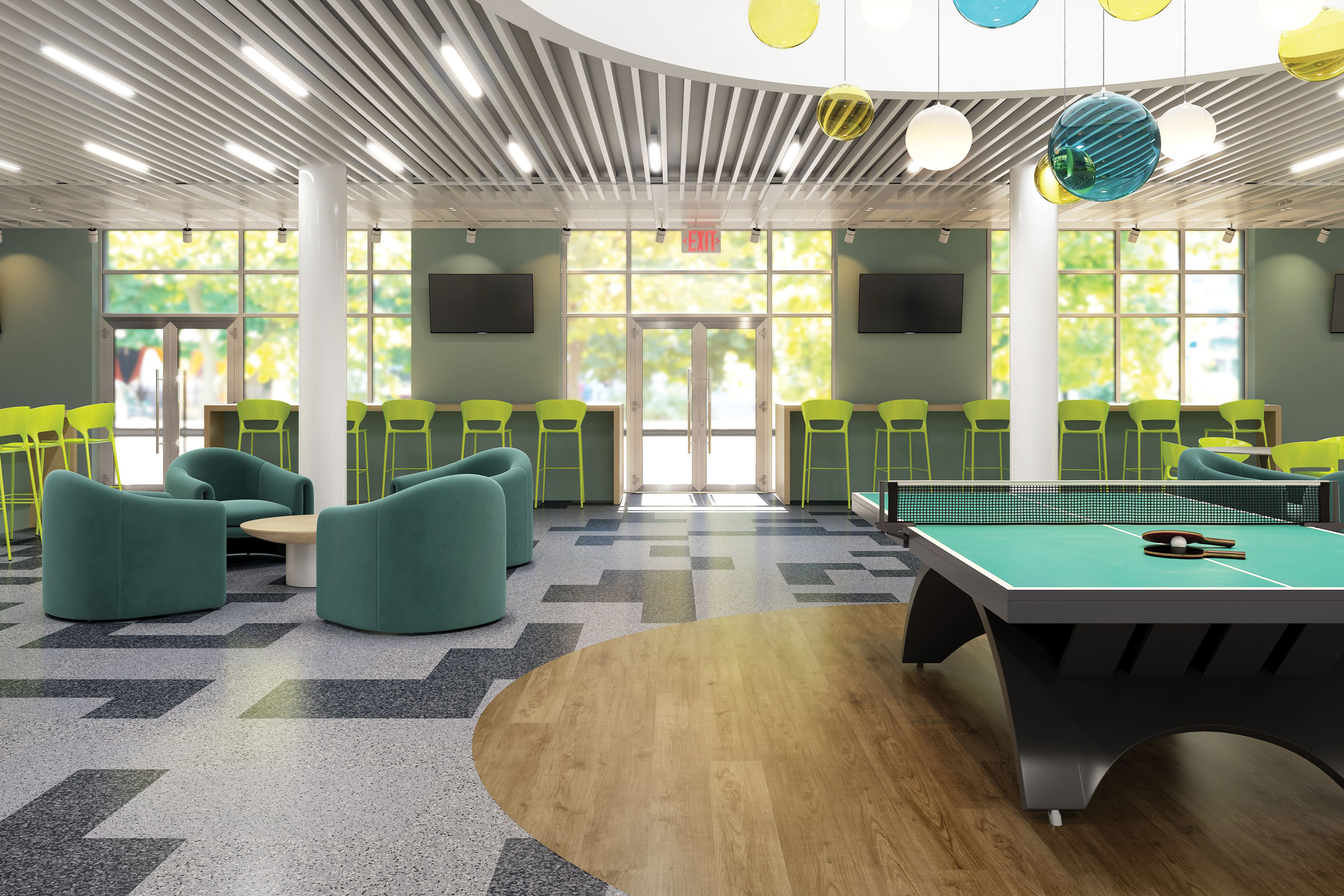Story at a glance:
- Shock resistance is an important consideration for commercial flooring.
- Durability, acoustics, and sustainability are all impacted by how shock resistant flooring is.
- Rubber flooring has high shock resistance and is more resilient, sustainable, and acoustically sound than other flooring materials.
Hardwood, rubber, carpet, concrete—no matter the material, commercial flooring has a lot to contend with. But not every flooring solution has inherent shock resistance to weather the storm of high-traffic commercial spaces.
We talked to the commercial flooring pros at REGUPOL about how shock resistance can impact flooring. Here’s what they said.
What is Shock Resistance?
Shock resistance refers to the ability of an object to withstand physical impact, or shocks, without damage. In flooring, materials with high shock resistance can mean that they are able to withstand heavy items dropping on the ground, such as weights in a gym. It can also refer to thermal shock resistance, measuring how flooring can withstand sudden temperature changes.
How Shock Resistance Impacts Flooring

Photo courtesy of REGUPOL
The shock resistance of flooring materials impacts the resiliency of the flooring solution—and a commercial building as a whole—long-term.
1. Durability
Commercial flooring solutions with higher shock resistance are more durable. If something heavy is dropped onto the floor, they are less likely to crack or scratch. They are also better equipped to fend off heat damage.
2. Acoustics
When an item is dropped on concrete or hardwood, you’re going to hear it. Meanwhile, solutions such as rubber flooring that have a higher shock resistance can help manage sound and create quieter spaces.
3. Maintenance
Flooring materials with low shock resistance require more upkeep to maintain their appearance and repair any damage.
4. Sustainability
Flooring solutions that are prone to damage have a shorter life cycle. Specifying commercial flooring with a higher shock resistance helps prevent frequent renovation, keeping waste out of the landfill.
Shock Resistance Benefits of Rubber Flooring

Photo courtesy of REGUPOL
So, which commercial flooring material is the most shock resistant? Rubber makes a strong case.
Rubber is known for its resiliency. “It provides a lot more shock absorption and also vibration absorption than other flooring materials,” says David Good, manufacturing engineer at REGUPOL. It’s also resistant to scratches, dents, and tears that other flooring materials are susceptible to.
Another of rubber’s great natural properties: sound-dampening. Specifying rubber flooring allows architects and designers to create quieter spaces thanks to its sound attenuation. “It really absorbs that impact sound,” or the noise that occurs when one object hits another, Good says. Impact noise can be as loud as dumbbells hitting the ground or as quiet as footfall.
It gives you about the same sound attenuation as a low-pile carpet.
“The nice part about the rubber is that footfall noise is diminished greatly because of rubber’s inherent properties and the actual cushion of the material,” says Bill Neifert, REGUPOL commercial sales director. “It gives you about the same sound attenuation as a low-pile carpet.”
When it comes to maintenance, caring for rubber flooring is a breeze. Because of its durability, you don’t have to worry about damage, and cleaning is as simple as “a neutral pH cleaner with a damp mop or a broom or vacuum,” Neifert says.
Perhaps one of rubber’s biggest benefits is to the environment. About 280 million tires are discarded annually by American motorists, according to the US Department of Transportation’s Federal Highway Administration. REGUPOL’s sustainable rubber flooring helps keep tire waste out of landfills. The manufacturer works with a recycling facility near its manufacturing facility in Lebanon, Pennsylvania, to source discarded tires from around the country.
The result is shock-resistant commercial flooring that lasts. “I can honestly not tell you how long it lasts,” Neifert says. “I have customers who say, ‘We’ve still got the same flooring,’ and it’s been 20, 30, and 40 years.”



